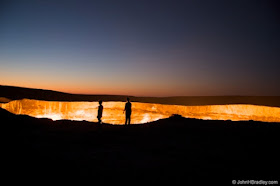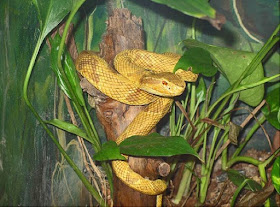10.Great Pacific Garbage Patch
Pacific Ocean
Pacific Ocean
The Great Pacific Garbage Patch, also described as Pacific Waste, is a place which was formed from marine trash in the North Pacific Ocean, its center is located approximately between 135 ° to 155 ° BB BB and 35 ° N to 42 ° N. Recent estimate states that the place was bigger than the state of Texas, with some estimates claiming that the place was also larger than the United States, but the exact size is not known for sure. This place is marked by very high concentrations of pelagic plastics, chemical sludge, and other debris that has been trapped by the flow of the North Pacific gyre.
9. Izu Island
Japan
Japan
Izu Islands are a group of volcanic islands stretching south and east of Izu Peninsula of Honshu, Japan. Administratively, they form the two towns and six villages, all part of Tokyo. The biggest is the Izu Oshima, usually called just Oshima. Due to their volcanic nature, the islands are constantly filled with the smell of sulfur (much like the smell of farts). Residents were evacuated from the islands in 1953 and 2000 due to volcanic activity and high levels of dangerous gases. The people back in 2005 but is now required to carry gas masks with them every time, if the gas level increases unexpectedly.
8. Gates of Hell
Turkmenistan
Turkmenistan
While drilling in Derweze in Turkmenistan in 1971, geologists accidentally found an underground cavern filled with natural gas. The ground beneath the drilling rig collapsed, leaving a big hole with a diameter of about 50-100 meters. To avoid the disposal of toxic gases, the scientists decided to burn a hole. Geologists hope the fire will go out within a few days but has been burning since then. Residents have named the cave door to Hell. As you can see from the picture above, this is one hell of an amazing place, but certainly one that you do not want to go.
7. Alnwick Garden
England
England
Inspired by the Botanical Gardens in Padua, Italy (who created the first botanical garden to grow medicinal and poisonous plants in the 1500s), Poison Alnwick Garden is a garden which is fully contained plants that can kill. Many plants grow without realizing it in the back garden, and those who grew up in rural England, as well as more unusual varieties. Flame-shaped bed containing belladonna, tobacco and mandrake. Alnwick Garden has Home Office permission to grow some plants that are very special, namely, marijuana and cocaine found behind bars in a giant cage.
6. Asbestos Mine
Canada
Canada
Asbestos is a set of six natural silicate minerals which are very valuable for fire resistance and sound absorption capabilities. Asbestos can cause cancer and other diseases. This is very dangerous, the European Union has banned all mining and use of asbestos in Europe. But, many people curious enough to want to close with the good. In Canada in Thetford Mines, you can visit a large hole, which is open asbestos mines are still fully operational. Workers in mines are not required to wear any respiratory protection, and in some parts of the nearest town, residential area right next to the sidelines against asbestos waste pile. The mine environment offers bus tours during the summer months. Tickets free. If you decide to visit, do not forget the full body with Anti-biohazard equipment.
5. Ramree Island
Burma
Burma
Ramree Island in Burma is a big swamp as home to saltwater crocodiles 1000s large salt water, the deadliest in the world. It is also home to carry the malaria mosquitoes, and poisonous scorpions. During the Second World War, the island is where the six-week battle in the Burma campaign. Here is a picture of one terrible night: "Tonight [from the February 19, 1945] is the most horrible that any member of the ML crew [motor launch] ever experienced. scattered rifle shots in the field of black swamp punctured by the screams of wounded men crushed in the jaws of reptiles large, and the blurred worrying sound spinning crocodiles made the hustle and bustle of the hell that has rarely been duplicated on earth. At dawn vultures arrived to clean up what the crocodiles had left ... Of about 1,000 Japanese soldiers that entered the marsh Ramree, only about 20 found alive. "
4. Yungas Road
Bolivia
Bolivia
North Yungas Road (Death Road) along the 61 kilometers (38 mi) or 69 kilometers (43 mi) road from La Paz to Coroico, 56 kilometers (35 miles) northeast of La Paz in the Yungas region of Bolivia. This is legendary, with estimates of extreme danger which states that 200 to 300 tourists die each year along the road. The road was marked includes many places where vehicles have fallen. This road was built in 1930 during the Chaco War by Paraguayan prisoners. This is one of the few routes that connects the Amazon rain forest region north of Bolivia, or Yungas, to the capital. Because of the extreme dropoffs of at least 600 meters (2,000 feet), one-lane width - most no roads wider than 3.2 meters (10 feet) and the lack of guard rails, the road is very dangerous. Further still, rain, fog and dust can make visibility precarious. In many places the road surface muddy, and can release the stone from the road.
3. Mud Volcano
Azerbaijan
Azerbaijan
In the spring of 2001, volcanic activity under the Caspian Sea offshore Azeri create a new island. In October 2001 there was a volcano eruption in Azerbaijan on Lokbatan impressive, but no casualties or evacuation warnings. But Azerbaijan does not have a single active volcano, at least not in the ordinary sense of the word. What Azerbaijan does have is a mud volcano - hundreds of them. Mud volcanoes are a little-known relatives of the various magmatic more common. They sometimes erupts with spectacular results, but generally not considered harmful - unless you happen to be there at the wrong time: every twenty years or more, hot mud exploded with great force, shooting flames hundreds of feet into the sky, and depositing tons of mud in the surrounding area. In an eruption, fire can easily be seen from 15 kilometers away on the day of the explosion, and was still burning, although at a lower level, three days later.
2. The Zone of Alienation
Eastern Europe
Eastern Europe
The Zone of Alienation is 30 km/19 mi exclusion zone around the Chernobyl nuclear reactor disaster site and administered by a special administration under the Ministry of Extraordinary Situations of Ukraine (Emergency). Thousands of residents refused to be evacuated from the zone or illegal back to it later. Over the past several decades is primarily the elderly population has decreased, falling below 400 in 2009. About half of the resettlers live in the city of Chernobyl, the rest scattered in villages throughout the zone. After trying repeatedly to the expulsion, the authorities became reconciled to their presence and allowed even the limited support services for them. Because of looting, there is a strong police presence - be warned, if you visit, you may be shot or get radiation poisoning - and we all know how horrible that could.
1.Ilha de Queimada Grande
Brazil
Brazil
Outer coast of Brazil, nearly south of São Paulo, is the Ilha de Queimada Grande (Snake Island). The island is untouched by human development, and for very good reasons. The researchers estimate that the island's life between one and five snakes per square meter. That number may not be so terrible if the snakes, say, 2 inches long and nonvenomous. Snakes on Queimada Grande, however, is a unique species of pit viper, which lancehead gold. Lancehead genus of snake is responsible for 90% of snake-bite deaths related to Brazil. The gold that occupies lanceheads Snake Island grew more than half a meter long, and they have a fast acting powerful poison that melts the flesh around their b ites. This place is so dangerous that required permission to visit.










No comments:
Post a Comment